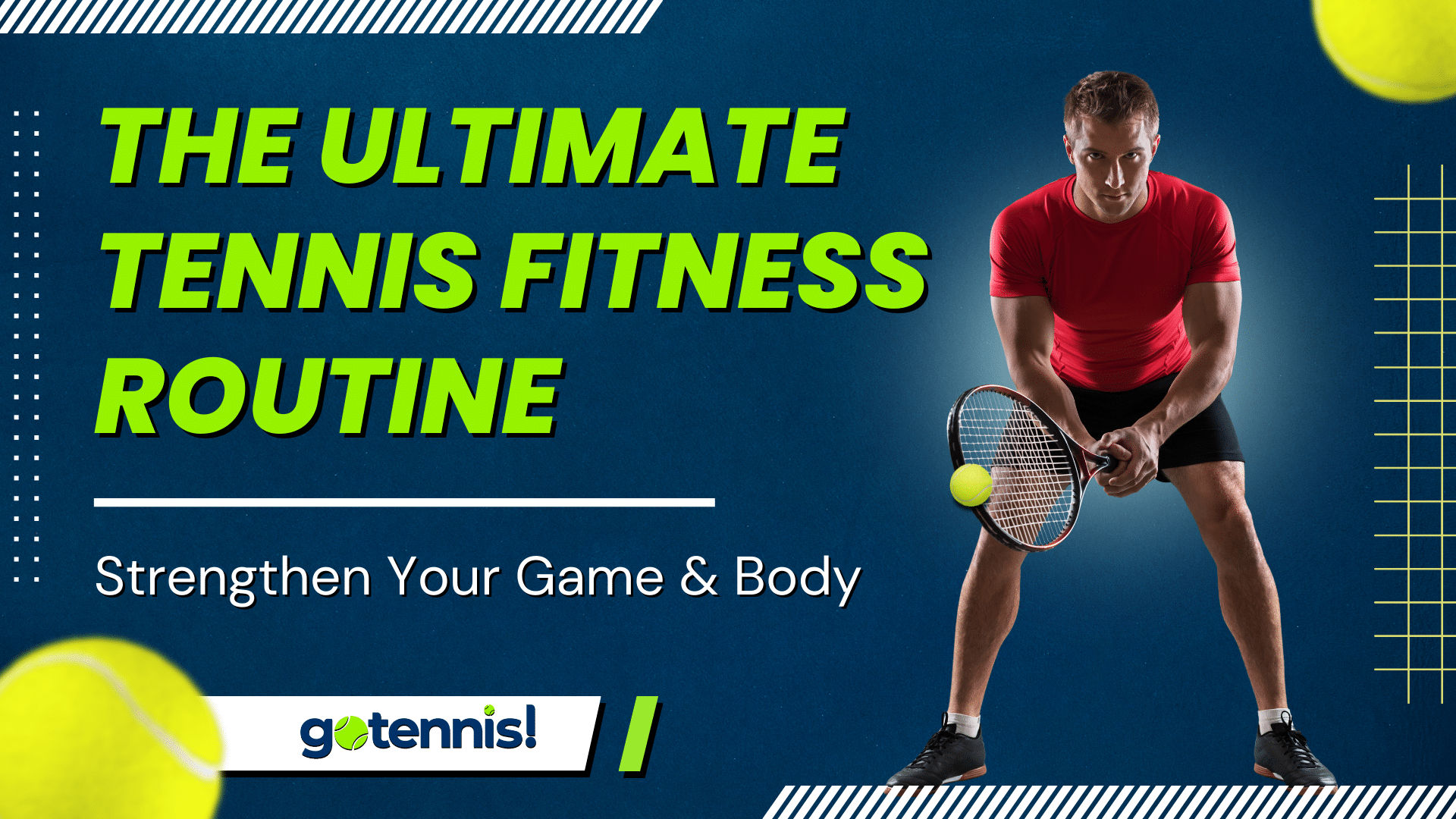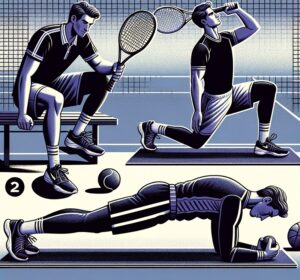Tennis players need to possess resilience, quickness, flexibility, and tremendous power—qualities that do not come easily from simply hitting the court. Whether your goal is to become the next tennis champion or you just want to win every game with your friends on the weekends, a well-rounded gym regimen is a terrific method to increase strength and conditioning and improve performance.
Continue reading for a list of some of the greatest gym workouts to incorporate into your weekly fitness regimens, along with a sample workout plan that incorporates a variety of these exercises so you can start training right away.
Know Your goal
When you are putting together a plan for your tennis workouts, the initial thing that you have to do is determine what your goals are. The workouts that you should include in your plan will be determined by what you want to achieve. Are you enhancing your general level of fitness, preparing for an upcoming tournament, or focusing on a specific part of your game?
The next step is to compile a list of stretches, preparations, and exercises that are specific to tennis players. You should try to incorporate at least a few exercises into your routine that focus on improving each of the key areas of tennis fitness, which are as follows:
Key Areas of Tennis Fitness
-
Strength
-
Agility
-
Flexibility
-
Endurance
-
Consistency
Creating a Balanced Workout Routine
Also, keep in mind that you do not need to perform each of these tennis workouts. A good strategy for working out should include establishing a weekly routine that incorporates all of the training you require.
Consider both the total number of sets and the number of repetitions in each set for each exercise that you want to include in your routine. In general, you should perform anywhere from two to four sets of each exercise, with ten to fifteen repetitions per set. It’s possible that doing less could limit your gains while doing more would likely lead to excessive exercise and an increased risk of injury.
If you feel that your form is getting worse as the sets or reps go on, reduce the weight or the number of sets or reps so that you can keep your form throughout the entire workout.
Strength Training for Tennis
Tennis players need to strengthen their entire body, and if they want to dominate the court by smashing, volleying, and slicing, they need to focus on both upper and lower body strength. Exercise will not only allow you to shoot with more accuracy, but it will also preserve the tissues in good condition, which will help you avoid injuries.
To maximize the benefits of each workout, concentrate on complex exercises that target many muscle groups at once. Squats, pogo jumps, weighted chin-ups, overhead presses, and rows are a few excellent strength training exercises to incorporate.
Core Workouts for Tennis Players
Tennis players need to have a strong core because various strokes, including strokes like serves, forehands, and backhands, need a transmission of energy from the thighs and hips through the center of the body to the arms and racquet. You can maintain your body’s stability and your powerful strokes by strengthening your obliques and other core muscles.
To improve your core muscles, incorporate workouts like hanging leg lifts, Russian bends, and planks. More inspiration is available on our hub for core workouts and exercises.
Tennis drills for balance and flexibility
Tennis Drills for Balance and Flexibility
Tennis players need to be able to navigate around the playing field fast and effectively. Therefore, it’s important to incorporate drills and motion variations into your training. As you prepare for the following stroke, you’ll need to quickly change your course.
You may schedule yourself into a fitness boot camp for an intense exercise that will keep you on your feet. Ladder drills are also a wonderful way to improve footwork.
Conditioning of the heart ( Cardiovascular Conditioning )
Being a competent tennis player requires having a reasonable level of cardiovascular health because the game is an endurance sport, and matches can run for hours, especially when competitive. You’ll be more likely to sustain your energy levels, heal from injuries more quickly, and lower your chance of exhaustion in a long game on the court if you incorporate regular cardio into your exercise regimens.
Add cardiovascular activities to your routine, such as rowing, bicycle riding, HIIT workouts, or jogging, to increase your endurance and recover between points throughout a game.
Rotational Training for Power
If you are able to comfortably twist your hips, abdomen, and shoulders, you will be able to execute movements with more force and agility on the tennis court. This is because tennis strokes rely largely on rotational power.
In order to increase core strength and power through rotation and unleash smashes like never before, including exercises such as Russian twists and bicycle crunches in your workout routine is essential.
Plyometric training
Plyometrics are high-intensity exercises that assist in increasing an athlete’s general athleticism as well as their power and speed, making them ideal for developing lightning-fast reactions and powerful serves.
The development of swiftness, agility, and response time can be greatly enhanced by performing exercises such as box leaps, lateral bounds, and throwing medicine balls.
Recuperation through rest day
For active recuperation, either take a day off from working out or keep to light exercises such as yoga, easy stretching, or swimming. Don’t push yourself more than necessary. Otherwise, It might have a negative impact on your body rather than a positive one. Taking rest is as important as maintaining your exercise routines.
Make plans for the next contests.
Locate the tournaments and important dates, then devise a plan for how you will adjust your training regimen in the seven to eight weeks following your subsequent major event. You might start out by doing a tennis-specific workout plan for strength and conditioning training that takes place primarily off the court for a few weeks, and then you might switch to mobility and power drills that need you to spend more time on the court.
Injury Prevention and Professional Guidance
If you find that you are prone to tennis injuries, it is in your best interest to collaborate with a trained professional to create a program that is tailored to your body, abilities, objectives, and requirements.
Takeaway
An exercise program that is well-thought-out is the best way to improve your physical health and on-court performance. Exercises that are regular yet diverse will help you lower the chance of injury, improve strength and quickness, improve flexibility, improve cardio, target specific muscle areas, and perform better on the court—not to mention with less discomfort or pain afterward.











